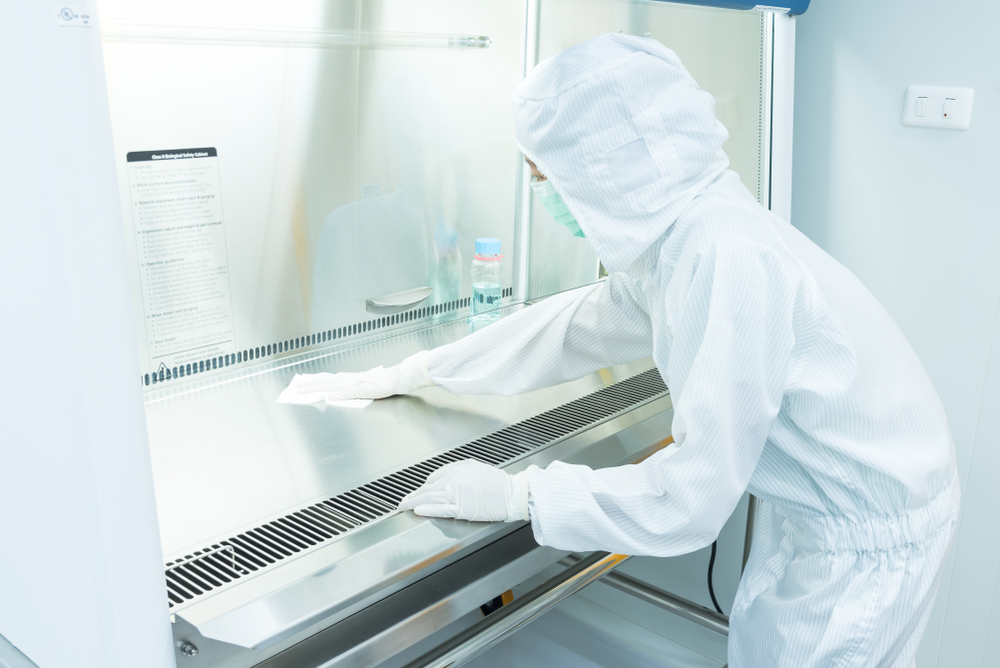At SEPS, we respect the value of laboratory cleanliness. For years, we’ve made lab equipment certification and maintenance a priority. Lab hygiene and safety are two principles essential to our everyday mission.
We also know how essential it is to decontaminate lab equipment. This term describes a procedure that renders a device, instrument or surface safe and clean.
Lab equipment decontamination is incredibly important. Right now, with the COVID-19 pandemic still being a significant issue, it’s more important than ever. It’s most important in labs that handle hazardous biological specimens or pathogens. Basically, depending on the lab’s biosafety levels, they require different decontamination procedures.
So what exactly does this involve? Which instruments should you treat? Below, you’ll find some crucial information on lab equipment decontamination.
This post has been updated for accuracy. The original publish date is November 26, 2019.
Levels of Lab Decontamination
The varying factors range from high-level sterilization to simple cleaning with mild detergent and water. Lab personnel can perform a few methods on a routine basis. However, most labs need professionals to properly decontaminate their equipment.
1. Cleaning is the first (and most basic) level. Essentially, cleaning is the first line of defense in decontamination. Basically, this involves a member of staff using soap and water and scrubbing to remove any visible residue. Additionally, even with professional decontamination, cleaning is the first step. Cleaning will remove any soil or organic matter from the surface. And it will also reduce the number of microorganisms on any surface.
2. Disinfection involves the use of chemicals or heat application. This second method of decontamination reduces the number of microbes on an object or surface. Furthermore, while it greatly reduces the number of microbes it does not totally eliminate them.
A disinfectant will limit the number of organisms enough to eliminate the risk of infections. In fact, the surface will not be decontaminated if it is not properly cleaned prior to disinfection.
3. Sterilization is the third level of decontamination. Sterilization uses a physical or chemical procedure to destroy all microbial life. This includes highly resistant bacterial endospores. Basically, the methods used to properly sterilize include heat, gas, steam, plasma and radiation. In fact, the odds of a microorganism surviving on a sterilized surface are less than one in one million.
What Should Be Decontaminated?
When it comes to the surfaces in your lab that require decontamination, the list is very long. However, it really depends on the work your lab does and the materials handled.
Laboratories that handle biological materials should have every surface decontaminated on a regular basis.
These are the items in a lab that require decontamination:
Refrigerators/Freezers
Refrigerators and freezers can (in some cases) be a breeding ground for bacteria or other harmful agents. Before having yours decontaminated, be sure to remove everything from the interior. Make sure your refrigerator is properly defrosted before having it decontaminated.
Biosafety Cabinets
A biosafety cabinet must receive this process regularly. You should never attempt to disinfect this unit yourself! Always call a professional to properly decontaminate your biosafety cabinet. Attempting it yourself can be incredibly hazardous.
Centrifuges
Centrifuges are another unit that a trained professional must decontaminate. Additionally, you should develop a routine schedule for decontamination, as the materials within a centrifuge can often be hazardous.
Fume Hoods
Fume hoods use laminar airflow to eliminate toxic vapors and chemicals from the workspace. Therefore, regular certification and decontamination is essential. SEPS can assist you with both. Keeping fume hoods sanitary is critical to keeping your personnel safe.
Other Lab Equipment Needing Decontamination
Ovens, incubators, water baths, scales, chemical storage cabinets, dehydrating units, and other lab machinery all require professional decontamination.
Conclusion – Decontamination & S.E.P.S.
At SEPS, we’ve made lab safety and hygiene our practice and top priority. Decontamination is essential to keeping labs clean and sterile. Of course, some lab environments present certain risks, and we make it our mission to eliminate them.
